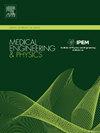使用陷阱型工具切割软组织的机制
IF 2.3
4区 医学
Q3 ENGINEERING, BIOMEDICAL
引用次数: 0
摘要
冷陷阱息肉切除术(CSP)是切除6mm以下结肠息肉的主要方法,使用陷阱型工具作为切割工具。然而,由于偶尔的切割失败,完全切除率经常降低。因此,了解陷阱型刀具的切削机理对于优化刀具和工艺都至关重要。对CSP的研究主要集中在手术案例研究上,对圈套工具的关注有限。本文研究了陷阱型刀具的切削机理,考察了切削速度和陷阱特性对切削力的影响。结果表明,在CSP过程中,内部组织首先骨折,其次是外部组织。高切割速度和细钢丝绳减少所需的切割力,并产生更平坦的切割截面。冷陷缺陷突出主要是由于粘膜下层组织的高韧性和强度阻碍了内部组织的断裂。这些发现增强了对软组织内部骨折机制的理解,并为优化陷阱型工具提供了有价值的见解,有可能提高息肉切除手术的疗效和安全性。本文章由计算机程序翻译,如有差异,请以英文原文为准。
Mechanisms of cutting soft tissues using snare-type tools
Cold snare polypectomy (CSP) is the predominant method for removing colonic polyps under 6 mm, utilizing snare-type tools as cutting tools. However, complete resection rates often decrease due to occasional cutting failure. Understanding the cutting mechanisms of snare-type tools is thus crucial for optimizing both the tool and procedure. Research on CSP has primarily focused on surgical case studies, with limited focus on the snare tools. This study investigates the cutting mechanisms of snare-type tools, examining the effects of cutting speed and snare properties on cutting force. The results show that the internal tissue fractures first during CSP, followed by the external tissue. High cutting speeds and thin wire ropes reduce the cutting force required and produce flatter cut cross-sections. Cold snare defect protrusions are primarily due to the high toughness and strength of the submucosa layer tissue, which impedes internal tissue fracture. These findings enhance the understanding of the internal fracture mechanism of soft tissue and provide valuable insights for optimizing snare-type tools, potentially improving the efficacy and safety of polyp resection procedures.
求助全文
通过发布文献求助,成功后即可免费获取论文全文。
去求助
来源期刊

Medical Engineering & Physics
工程技术-工程:生物医学
CiteScore
4.30
自引率
4.50%
发文量
172
审稿时长
3.0 months
期刊介绍:
Medical Engineering & Physics provides a forum for the publication of the latest developments in biomedical engineering, and reflects the essential multidisciplinary nature of the subject. The journal publishes in-depth critical reviews, scientific papers and technical notes. Our focus encompasses the application of the basic principles of physics and engineering to the development of medical devices and technology, with the ultimate aim of producing improvements in the quality of health care.Topics covered include biomechanics, biomaterials, mechanobiology, rehabilitation engineering, biomedical signal processing and medical device development. Medical Engineering & Physics aims to keep both engineers and clinicians abreast of the latest applications of technology to health care.
 求助内容:
求助内容: 应助结果提醒方式:
应助结果提醒方式:


